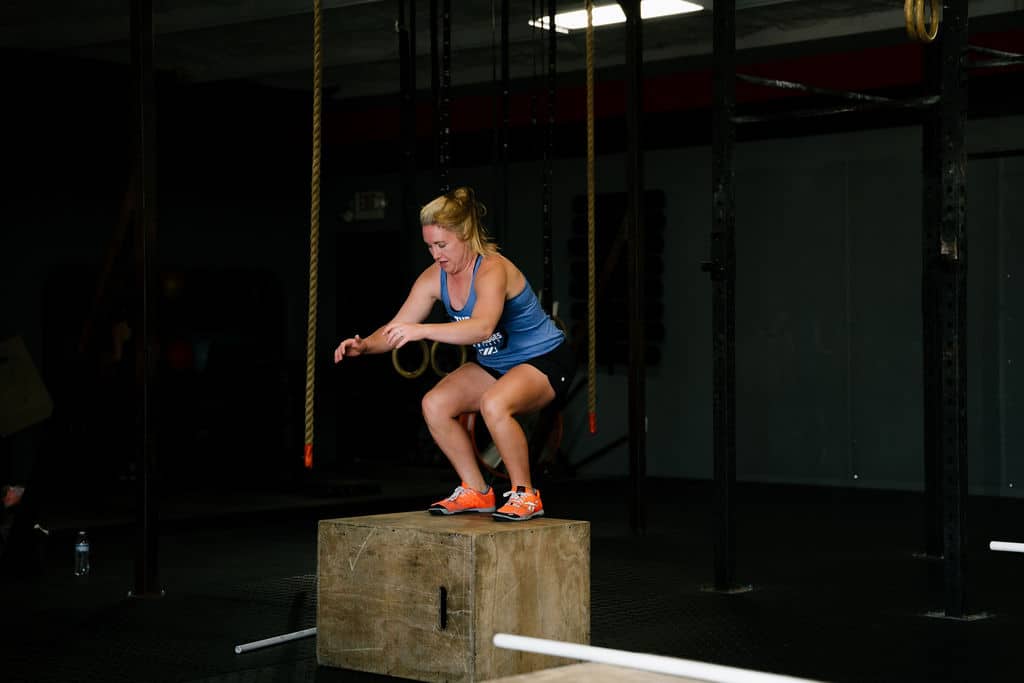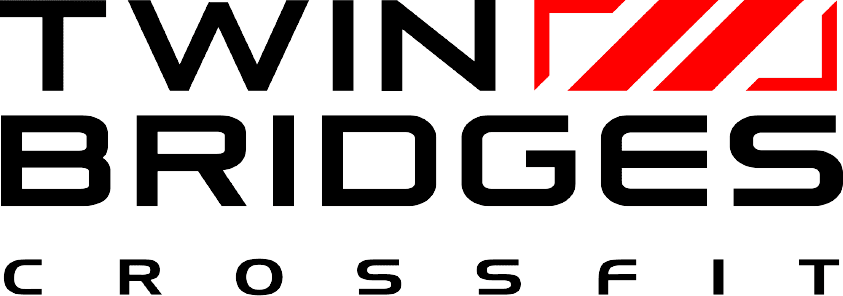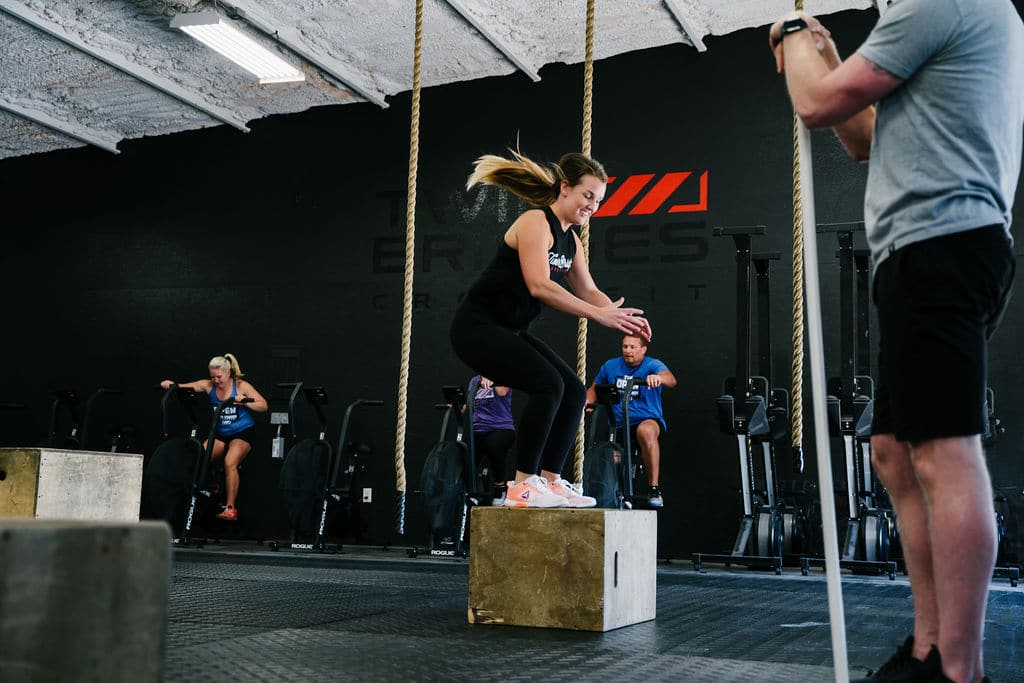*The second in a series of three articles meant to more specifically define CrossFit and bring a little more clarity to why we do what we do everyday.
We like to say that intensity is the “secret sauce” that makes CrossFit work. But what does “intensity” mean, exactly?
Scientifically speaking, intensity is defined as power, and power is force multiplied by distance, then divided by time. It is useful to understand this because traditionally intensity has been very loosely defined.
People think, well I’m sweating a lot and my heart is beating faster, so this must be intense! The problem with these subjective assessments is they are rarely accurate. By insisting that we use the scientific definition of intensity, we are able to use data from our workouts to measure our actual power output–our intensity.
But to put it more simply, intensity is doing more work, faster. If you want to look better and feel better, intensity will make it happen.

Once we understand what intensity is and isn’t, it’s equally important that we understand the appropriate applicaiton of it. Intensity is different from person to person. This is why we speak often about “relative intensity.” That is, an amount of power output that is appropriate for each athlete’s individual physical and psychological tolerances.
So how do we find our relative intensity? At TBCF, the two most important tools we use to help an athlete find their appropriate level of intensity are time caps and scaling. By using those two tools correctly, we make sure that everyone benefits from each workout, regardless of their current level of skill or experience.
Let’s take the classic CrossFit benchmark “Diane,” for example. Diane as prescribed is 21-15-9, Deadlifts (225/155) and Handstand Push-ups. Diane is meant to be a shorter, high intensity workout. To start helping athletes find their relative intensity, I’ll set our time cap at 9 minutes.
Using the knowledge that there will be a “hard stop” at 9 minutes, we start to scale Diane for individual athletes to help them make sure they can finish under the time cap. We can always scale any workout in one of three ways: by lightening the load, by cutting the reps or time, and/or by reducing the complexity of the movement. As coaches it’s our job to properly work within those parameters to create a workout that’s equally effective and safe for every athlete.
This is how we find our “relative intensity.”
There are a lot of different ways to define intensity: it’s the independent variable most commonly assocaited with maximizing the favorable rate of adaptation to exercise. It’s getting comfortable being uncomfortable. It’s picking up the barbell or jumping back up on the rig when all you want to do is stop.
However you choose to define it, we need to all understand it. Because intensity is what gets results.
About the Author
Edward Getterman is a Certified CrossFit Trainer (CF-L3) and the owner of Twin Bridges CrossFit in Waco, Texas. If he can’t be at the gym or at home, he’d prefer to be at Walt Disney World. He loves deadlifts, hates running, and believes above all else that CrossFit is for everyone.

